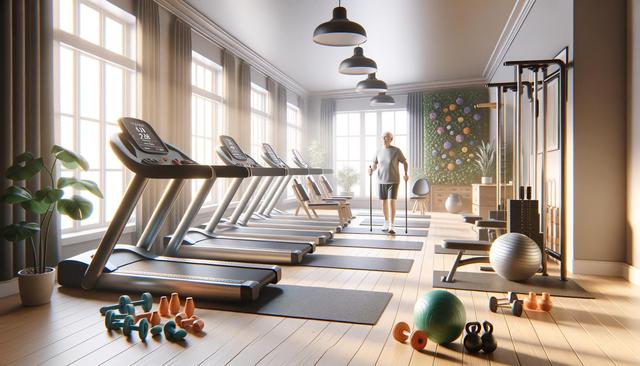Physical Benefits of Gym Workouts for Older Adults
As we age, maintaining physical health becomes increasingly important. For seniors, regular physical activity can help prevent or manage chronic conditions such as arthritis, diabetes, and heart disease. Gyms provide a safe and structured environment for older adults to engage in strength training, cardiovascular workouts, and flexibility exercises. These activities can support bone density, reduce the risk of falls, and enhance overall physical resilience.
Benefits include:
- Improved balance and coordination
- Increased muscle strength
- Better joint flexibility
- Enhanced cardiovascular health
Even light strength training with resistance bands or low-weight machines can make a significant difference in everyday life activities, like climbing stairs or carrying groceries. Many gyms also offer senior-specific equipment that is easier on joints and adaptable to different mobility levels.
Mental and Emotional Well-being
Exercise isn’t just good for the body—it’s also beneficial for the mind. Visiting the gym regularly can help reduce symptoms of anxiety and depression, which are concerns for many older adults. Physical activity stimulates the release of endorphins, the body’s natural mood lifters, and contributes to better sleep and reduced stress.
Additionally, engaging in group classes or working out in a social environment can provide emotional support and reduce feelings of isolation. This is especially vital for seniors who live alone or are at risk of social withdrawal. Mental benefits include:
- Improved cognitive function
- Better sleep patterns
- Enhanced self-esteem
- Greater sense of purpose
Some gyms even integrate cognitive training or offer brain-health-focused classes, combining physical and mental fitness in one setting.
Senior-Friendly Gym Programs
Many gyms today recognize the unique needs of older adults and have developed programs specifically tailored for them. These programs often include low-impact classes like water aerobics, chair yoga, tai chi, and balance training. Classes are typically led by instructors with experience in senior fitness, ensuring that the exercises are safe and effective.
Features of senior-friendly gym programs:
- Modified equipment and workout routines
- Classes focused on flexibility, strength, and balance
- Clear instructions and slower pace
- Supportive and inclusive environment
These offerings make it easier for seniors to feel comfortable and confident as they begin or continue their fitness journey. Many locations also provide orientation sessions to help new members become familiar with the equipment and layout of the facility.
Overcoming Barriers to Getting Started
While the idea of joining a gym may seem intimidating to some seniors, many of the common concerns can be effectively addressed. One frequent barrier is the fear of injury. However, with proper guidance and low-impact options, the risk is minimal. Another concern is the feeling of not belonging—something that senior-specific classes and welcoming environments can help to overcome.
Here are some tips for getting started:
- Consult with a doctor before beginning a new exercise program
- Start slowly and build up gradually
- Ask staff for help with equipment or routines
- Bring a friend or join a group class to stay motivated
Many gyms offer trial memberships or discounted rates for seniors, which can make trying it out more accessible. Once familiar with the environment, many older adults find that the gym becomes a place they look forward to visiting regularly.
Staying Committed and Seeing Results
Consistency is key to seeing benefits from any fitness routine. For seniors, this means finding a balance between challenging themselves and listening to their bodies. Tracking progress, whether it’s an increase in stamina or improved flexibility, can be incredibly motivating. Setting realistic goals and celebrating small milestones helps maintain enthusiasm over time.
Helpful strategies include:
- Creating a weekly workout schedule
- Participating in group challenges or events
- Keeping a fitness journal
- Rewarding yourself for reaching goals
Many seniors report improvements not only in physical health but also in their ability to engage in hobbies, travel, or play with grandchildren. These real-life benefits are often more impactful than the numbers on a fitness tracker. With the right support and mindset, the gym can become a cornerstone of a healthy, active lifestyle.
Conclusion: Encouraging Confidence Through Fitness
For seniors looking to improve their health, maintain independence, and enjoy a more active lifestyle, the gym can be a valuable resource. With tailored programs, supportive communities, and well-designed equipment, older adults can safely and effectively incorporate exercise into their daily lives. Whether you’re just beginning or returning to fitness after a break, the journey is well worth the effort—and the rewards extend far beyond physical strength.




Leave a Reply